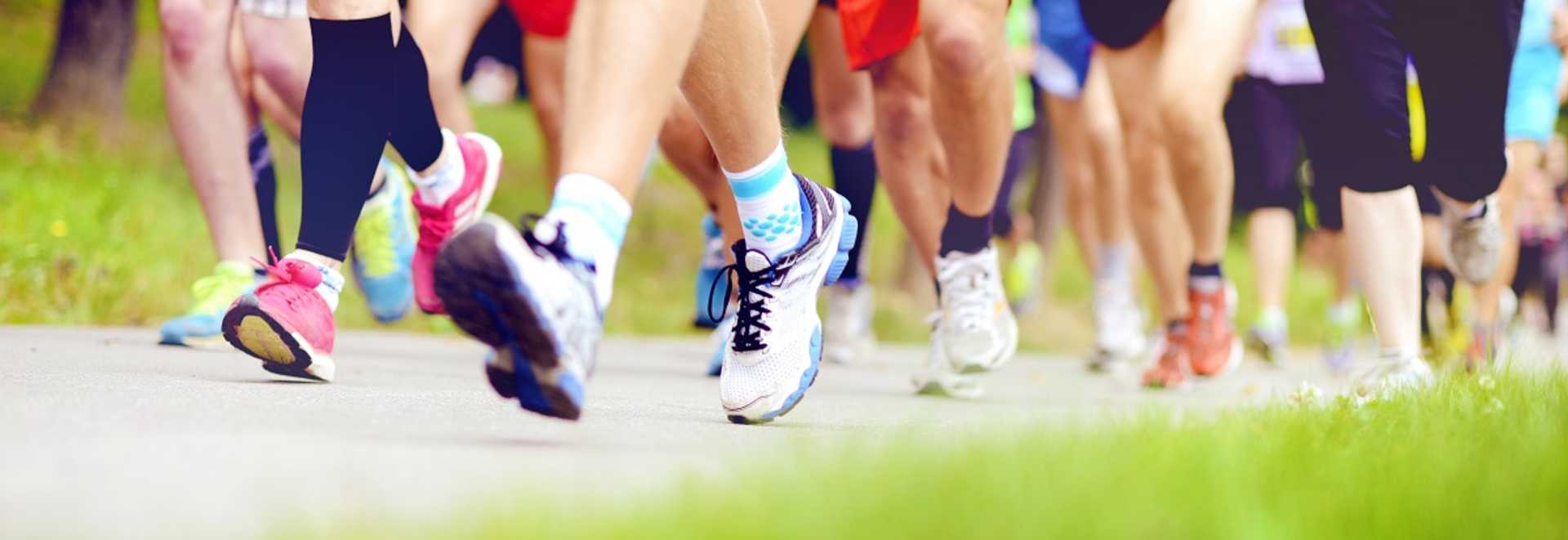Running is such an accessible way to get a great workout. You need a pair of sneakers, and some motivation and off you go! But as a physical therapist, I see a lot of injuries that arise from running or jogging and they all tend to be over-use injuries. Hamstring strains, groin pulls, knee, hip or back pain are the most common that I treat and can side-line the most committed of runners.
So, what do you do if you are dealing with pain and you can’t run anymore? Can PT help you recover? Yes! I will go over a couple of the most common injuries that I see and how PT can facilitate the healing process.
First, let’s look at the physical therapy evaluation. A Physical Therapist evaluates muscular balance surrounding ankles, knees, hips and the back. When muscles are healthy, they are both flexible and strong. When running there is a specific pattern of recruitment and timing of muscle activity that helps you be an efficient and strong athlete. If there is dysfunction in the firing of muscles or the timing of recruitment, it can lead to pain. Let’s look at 2 common complaints to better understand this…
A hamstring strain, which may present as pain in the back of the thigh or right under the buttock is a common running injury. It hurts when your first start running, may feel better after a mile but really gets flared up running hills or long distances. This is usually due to the hamstrings being over-utilized while the glutes (butt muscles) are not doing their job. The glutes are a powerhouse muscle that helps support your leg in single leg stance and they extend the leg (bring the leg behind your in your stride). The hamstring’s main job is to bend the knee but with dysfunctional patterning, it can also extend the hip. When it does this instead of the glutes, it gets strained, over-used and fatigued, leading to pain and possible tearing. PT addresses this problem through proper stretching, hands-on manual therapy to reduce pain and then specific exercises to re-balance muscle activity.
Knee pain is the single biggest complaint I hear from runners. There are many different reasons for it but I’m going to look at one. Patello-femoral syndrome or Chondromalacia Patella is a dysfunction that causes pain under and around the knee cap. Pain increases with prolonged running, running downhill or walking down stairs. It can be due to tight muscles on the outside or lateral aspect of the knee, and under-firing muscles on the medial (inside) aspect of the knee joint. There is also usually significant weakness in the lateral hip muscles, the gluteus medius and minimus, that creates poor alignment at the knee, especially in single leg stance. Treatment involves loosening tight muscles, re-activating the “lazy” ones, strengthening the hip musculature and mobilizing the knee caps.
Techniques I like to use and have found very effective in getting people back to running include manual therapy (hands-on techniques to muscles and joints), neuro-muscular re-education, functional dry needling and therapeutic exercise prescription. Homework includes dynamic and static stretching, balance work and running-specific exercise.
So, don’t give up on your running program if you have pain. See a PT to get properly evaluated and start your return to running ASAP!
For a list of Running Races in the Denver Area, Click Here.
To make an appointment at Holistic PT, Click Here.


